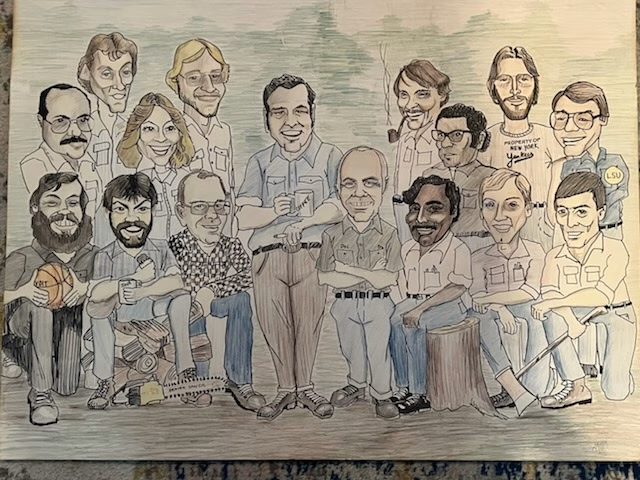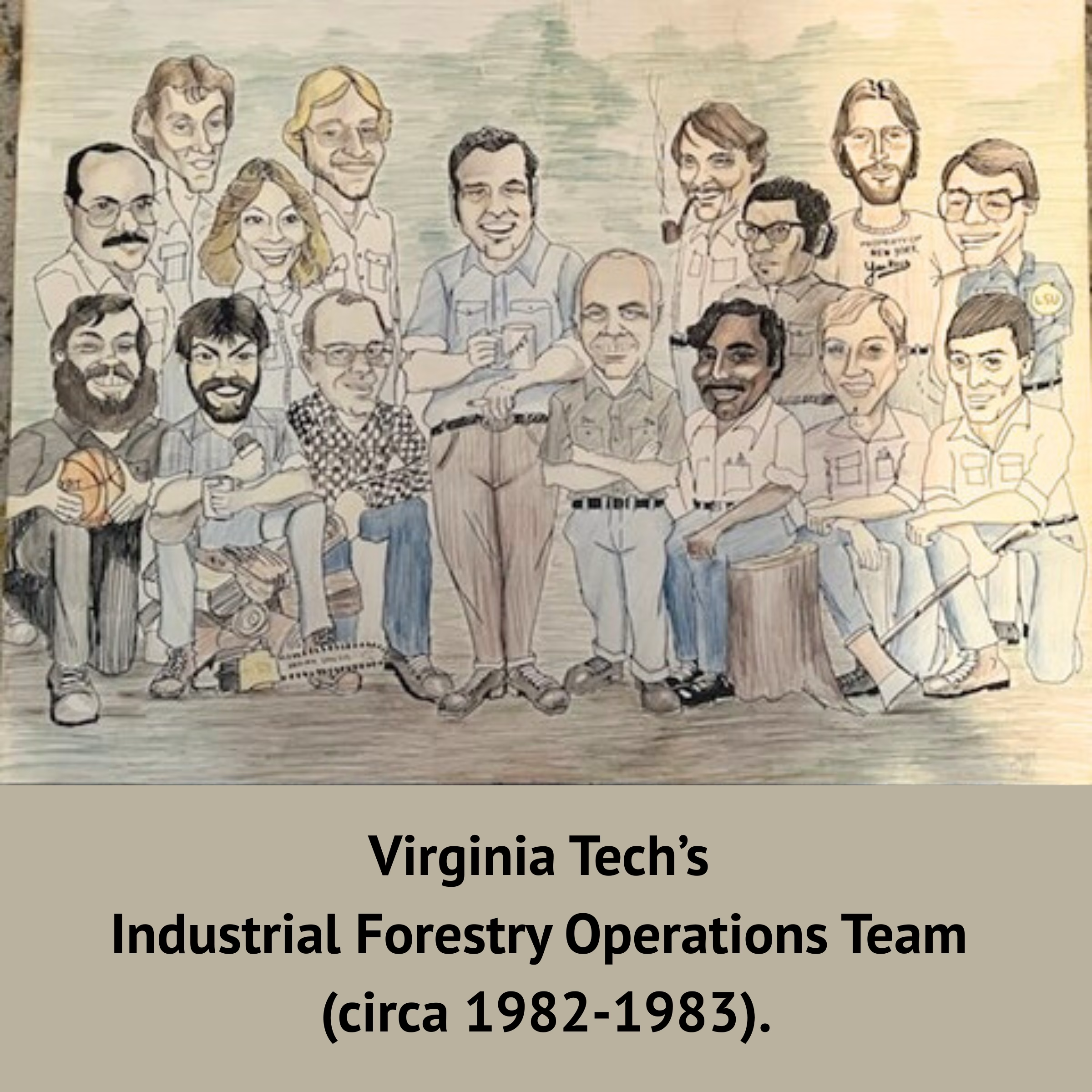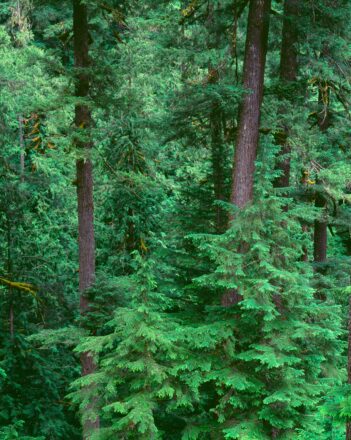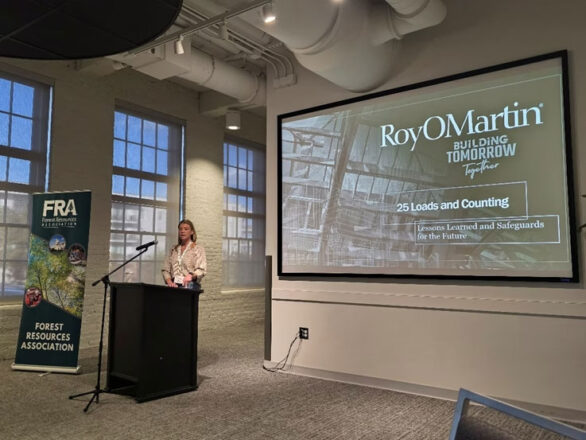FRA and Virginia Tech’s Industrial Forestry Operations (IFO) Program

Soon, we will be celebrating the arrival of Fall, one of the most favored seasons for various reasons – the promise of a much-needed reprieve from the oppressive summer heat for many, witnessing fall foliage in its full splendor, and possibly even the start of a new school year. All of the above reasons are on my list of contributing factors for my love of the Fall Season. The start of a new school year also means the beginning of a new college football season. While my Virginia Tech Hokies are no longer a perennial Top 10 program, a new season with a fresh start to attempt the climb back into national relevancy is exciting.
Another topic also associated with football is the term “coaching tree”. This is where a successful head coach tutors a handful of protégés, and then these assistant coaches move on to become successful head coaches for other teams. Alabama’s Nick Saban has one of the more impressive active coaching trees in the business today, highlighted by the success demonstrated by his former assistants and current head coaches Kirby Smart (Georgia), Steve Sarkisian (Texas), Lane Kiffin (Ole Miss), and Dan Lanning (Oregon). That’s an impressive list indeed!
I could talk about football all day, but that’s not the primary topic for this article. So, what’s the connection between Fall, college football, coaching trees, and forestry? In the 1960s and early 1970s, the American Pulpwood Association (now more appropriately named the Forest Resources Association) oversaw an Atlanta-based harvesting research program – the Harvesting Research Project (HRP). This unit was primarily tasked with introducing skidders and knuckle boom loaders into the logging community. This unit was directed by Dr. Tom Walbridge, more affectionately known as “Doc” to his friends and colleagues. Doc was previously employed by Hiwassee Land Company (Bowater Timberlands) before transitioning to lead the HRP. Ken Rolston, APA’s Executive Vice President at the time, saw the value in moving the HRP to a major research university. Dr. John Hosner, head of Virginia Tech’s School of Forestry and Wildlife, recognized the benefits and advantages of establishing a harvesting and operations program on campus, which would help create strategic linkages between the university and the forest products industry. In 1974, Doc Walbridge and a young HRP researcher, Bill Stuart, arrived in Blacksburg and quickly assembled a team of first-class forest products and harvesting operations researchers at Virginia Tech. This was the birth of Virginia Tech’s Industrial Forestry Operations (IFO) program. Under Doc and Bill’s leadership, Virginia Tech’s IFO program became one of the preeminent and most respected programs in the country throughout the 1980s and 1990s, with newly minted graduates well-prepared to transition to successful careers ranging from higher education administration, university faculty, and all sectors of the forest products value chain.

Let’s take a deeper dive into this research unit. The “Virginia Tech IFO Tree”, in many regards, is equally impressive as some of the more famous coaching trees or networks around. The above caricature was the creative artwork of an unknown artist; evidently, one of the people depicted in the picture was responsible for making it all happen. My best efforts to date the caricature have narrowed the window to the Fall of 1982 or early 1983. The shorter gentleman standing in the center is none other than Doc Walbridge himself. Doc could often be found in Cheatham Hall at Virginia Tech, well beyond retiring from his faculty position in the late 1980s. A common spot was outside the 228 Office Suite, where we students were quizzed about our most recent research ventures and always received some encouragement and advice. I recall that the conversations almost always, at some point, switched to fly fishing. His stories were legendary, and his reputation as a first-class fly fisherman was even more epic. By now, you might have deduced the taller gentleman to Doc’s right is Bill Stuart. Bill would go on to earn his Ph.D. under Doc at Virginia Tech and serve on the faculty at both Tech (1980 – 1999) and Mississippi State University (1999 – 2013). In 1997, during their 25th Anniversary Year, Southern Loggin’ Times magazine included Bill on its list of “The 25 Most Influential People in the Industry”. After reading the issue, Bill told me that recognition meant more to him than any other professional honor or award he received throughout his career. In the interest of full disclosure, Bill was my former major professor and boss for 13 years at both Virginia Tech and Mississippi State. I’m not sure if the folks at Guinness World Records track the file size on Excel spreadsheets for Award consideration. If so, Bill would easily still hold the record.
Several other IFO graduate students and researchers depicted in the caricature spent time in Blacksburg and went on to make significant contributions to the forest products industry, either through direct industry employment, academic appointments, university administration, or a combination of these. They are no strangers to the FRA community either.
- Dr. Dale Greene (Dean of the Warnell School of Forestry and Natural Resources at the University of Georgia)
- Dr. Dick Kluender (Dean of the School of Forestry, Agriculture and Natural Resources at the University of Arkansas – Monticello)
- Dr. Joe McNeel (Director of West Virginia University’s Division of Forestry and Natural Resources and the Appalachian Hardwood Center)
- Dr. Tom Gallagher (Regions Bank Endowed Professor of Forest Operations at Auburn University)
- Jaime Teel (Smurfit Westrock)
- Tom Reisinger (Reisinger & Associates)
I should also mention that Drs. Bob Shaffer and Mike Aust would arrive in Blacksburg shortly after the caricature era and become valuable members of Tech’s IFO Team. The strong relationship between Virginia Tech and FRA continued well into the early 2000s. Bill Stuart and Tom Gallagher brought students to FRA’s Annual Meetings during their careers at Virginia Tech. The networking opportunities for students to meet and interact with industry leaders were a valuable experience for many. I still have several mid-career industry employees who reminisce about their experiences attending FRA meetings during their student days. And if I’m not mistaken, both Bill and Tom continued to bring their students after they left Virginia Tech and joined the faculty at Mississippi State and Auburn, respectively. More recently, the University of Georgia has encouraged faculty and student engagement and participation in FRA meetings and events, and I can’t help but assume that is likely a reflection of Dale Greene’s support of FRA over the years. And, to this day, Tom Gallagher is a permanent fixture at FRA Annual Meetings and is the biggest champion of FRA’s successful Timber Harvesting & Procurement Short Course. The temptation to list other benefactors of the VT IFO program who are well-known in the industry and FRA community is strong; however, I have decided to resist that urge because I would certainly, but inadvertently, leave some people off the list. But trust me – the twigs that stem from the main branches of the VT IFO tree are far-reaching across the wood supply value chain.
This weekend, while you are enjoying the unofficial start to Fall and possibly watching college football action, take some time to reminisce about your days on campus and how the investment and experience helped prepare you for future success. I am always interested in hearing more stories about Virginia Tech’s IFO program, so please feel free to send any stories my way. And for what it’s worth, there may or may not be a prize for whoever can successfully identify the above-named researchers in the Virginia Tech IFO caricature. I do reserve the right to exclude several people from participating in the contest due to inside intel. There’s no need to list them here. They know who they are. And a few even helped me piece together some of the background information for this article, which disqualifies them from the competition. Now, I will continue my mission to find the most suitable repository for the caricature. The picture currently resides in my office, but it needs to occupy a more prominent space on a wall somewhere. I made a promise to help find its permanent home, and I take that obligation seriously. More on that quest later. Stay tuned!

